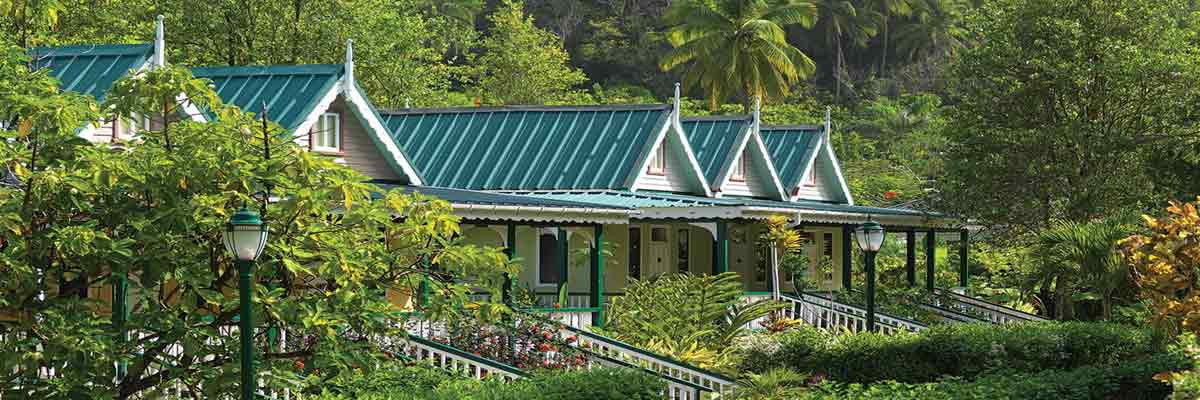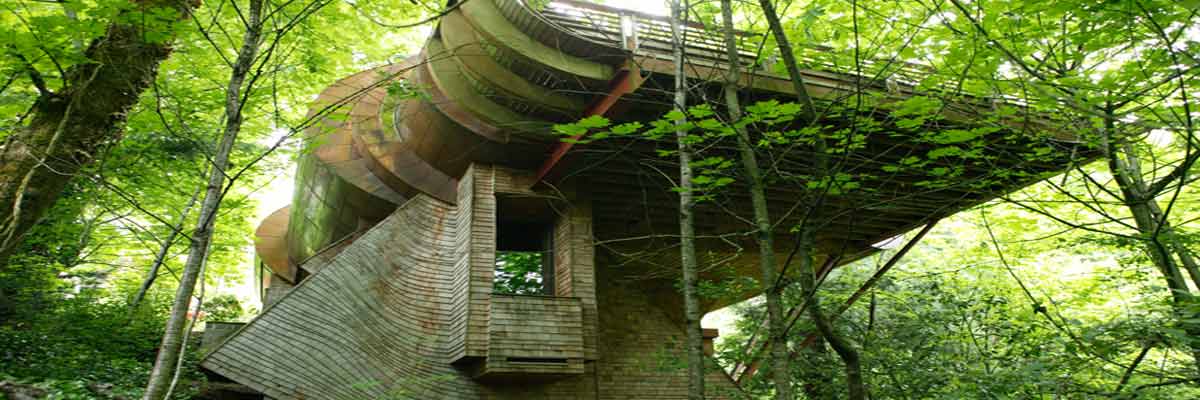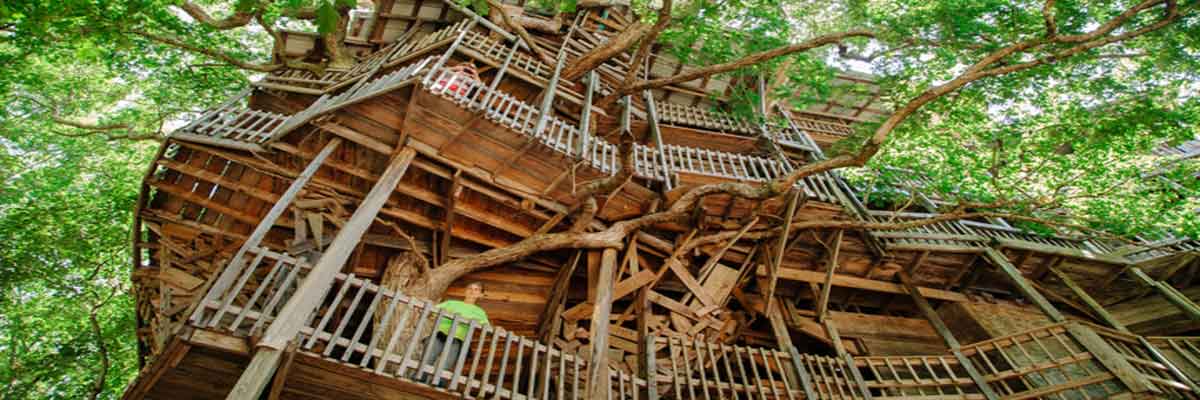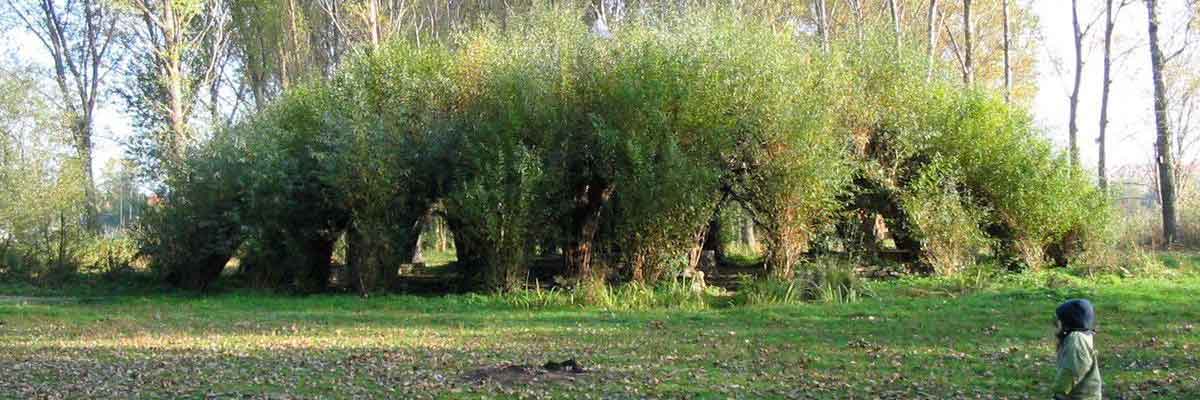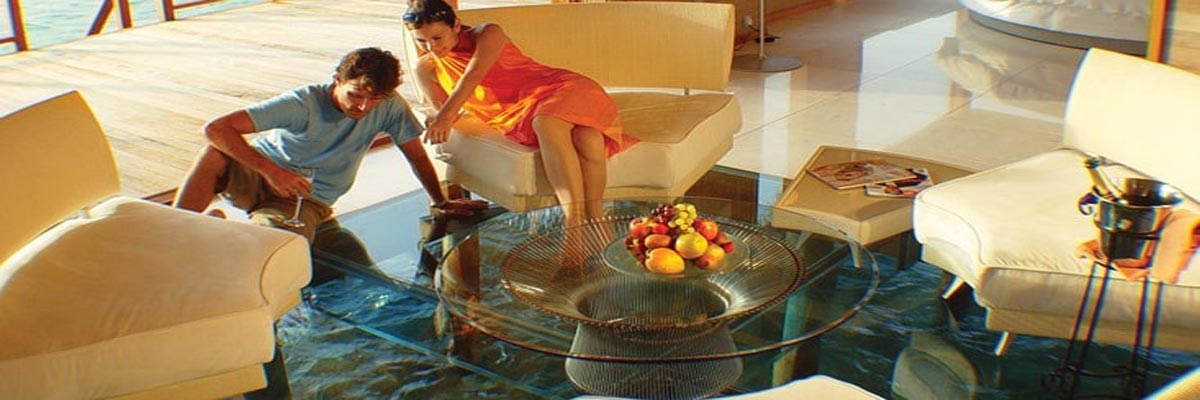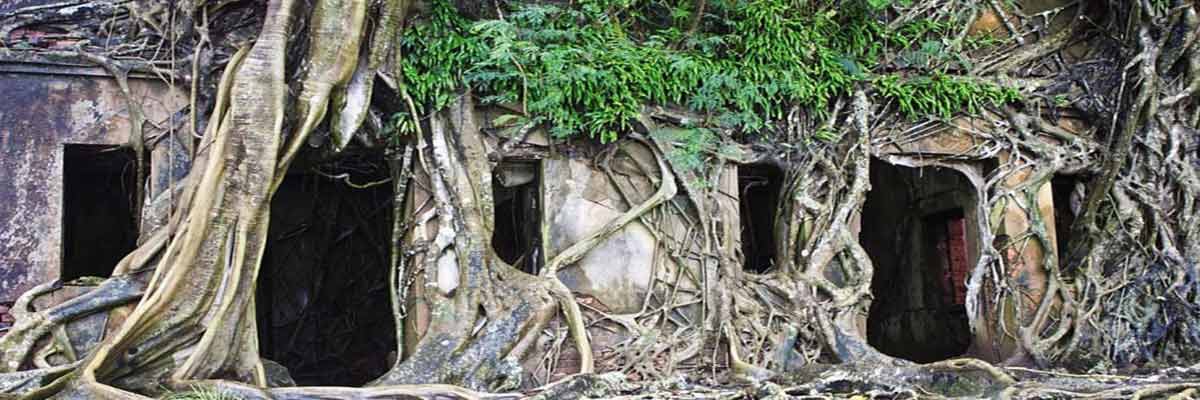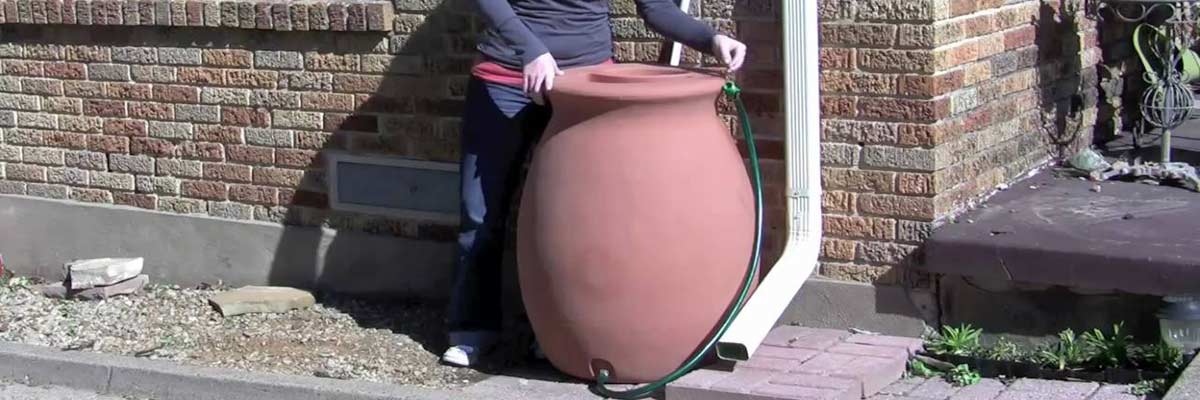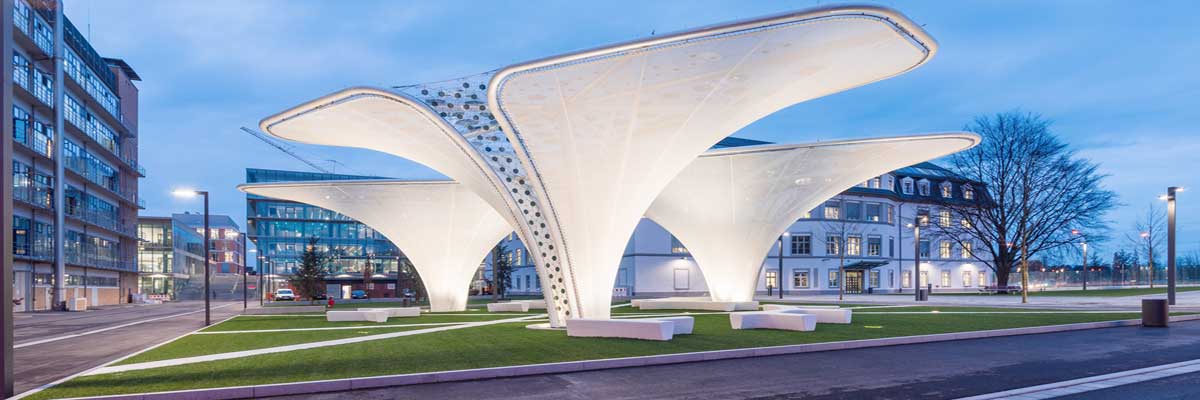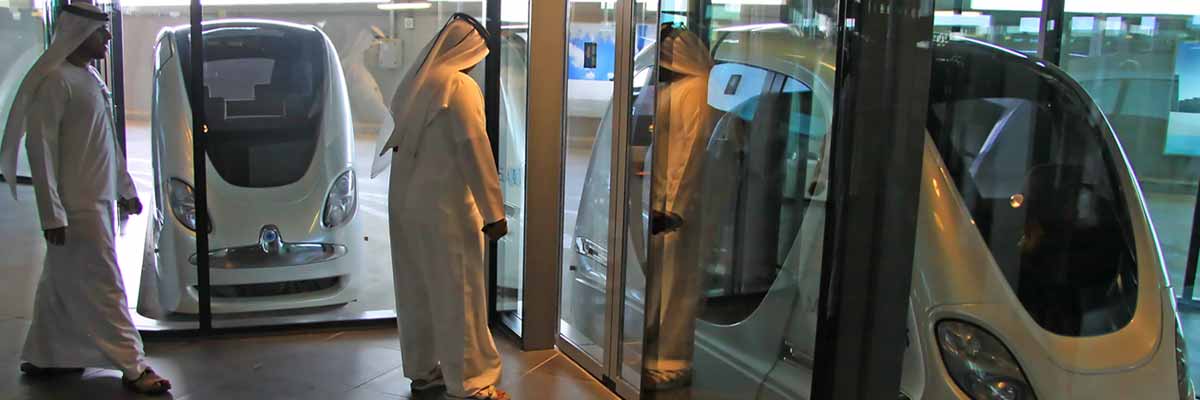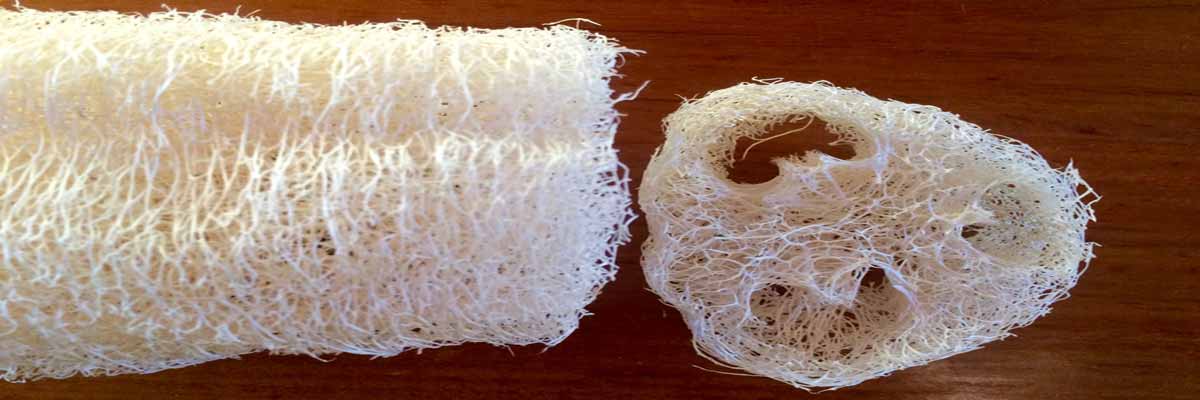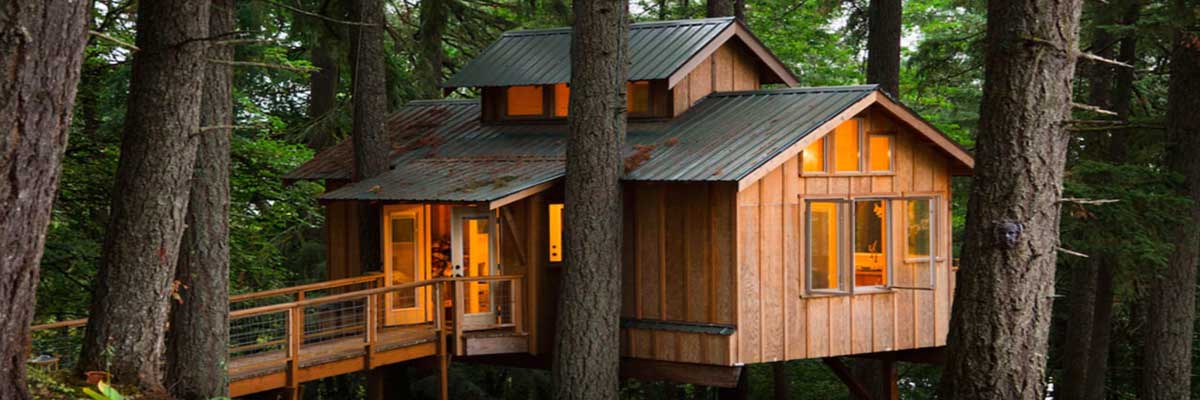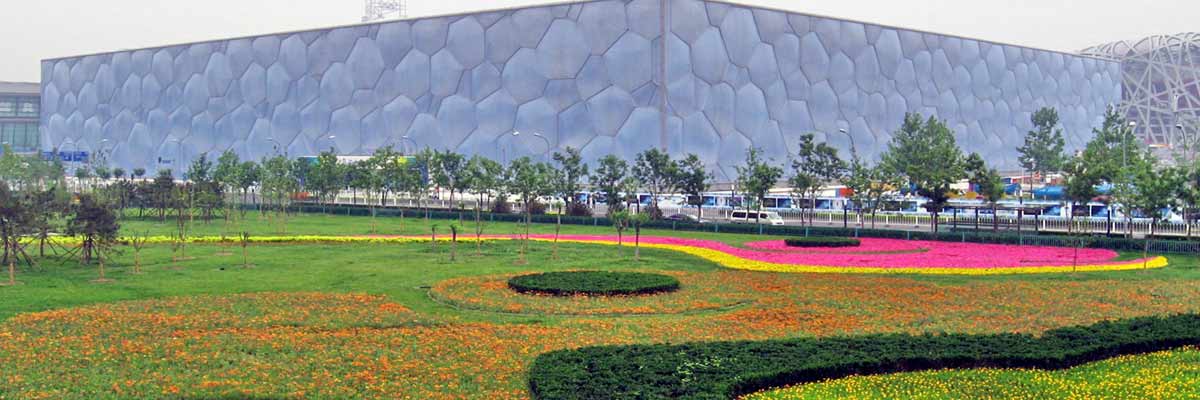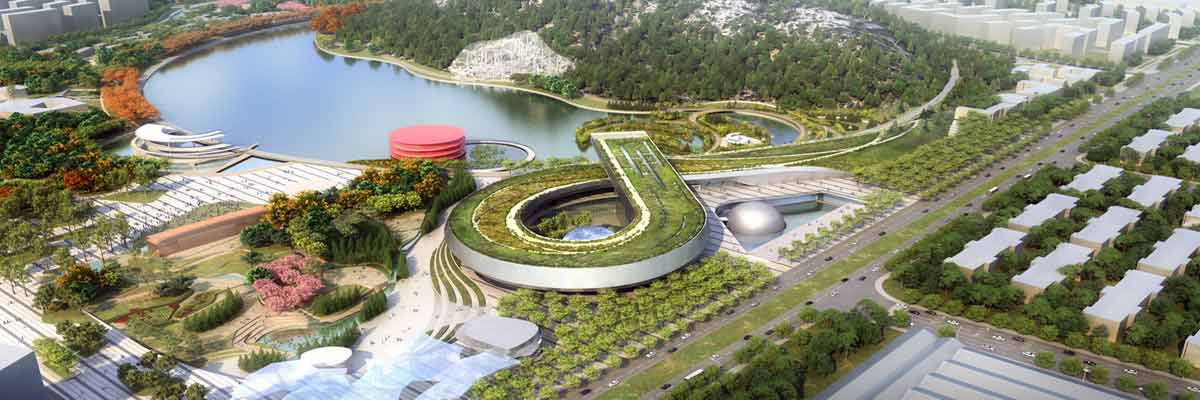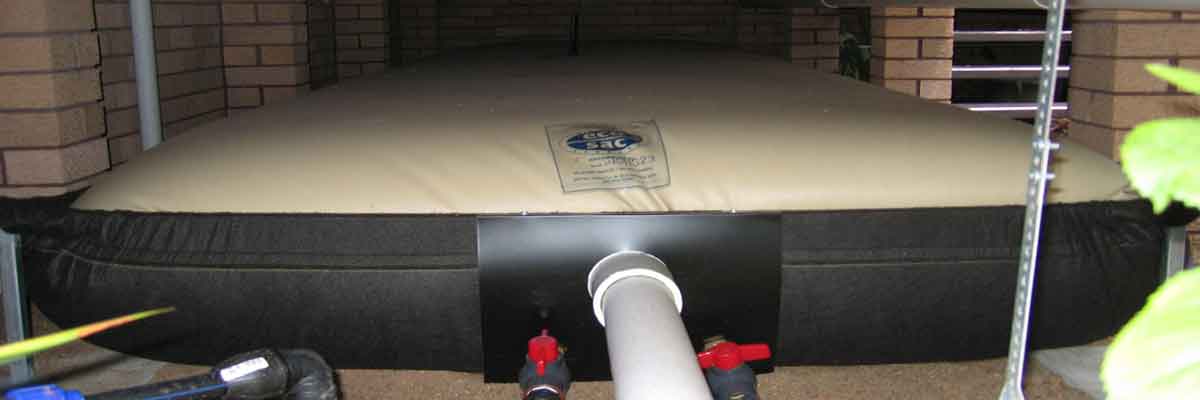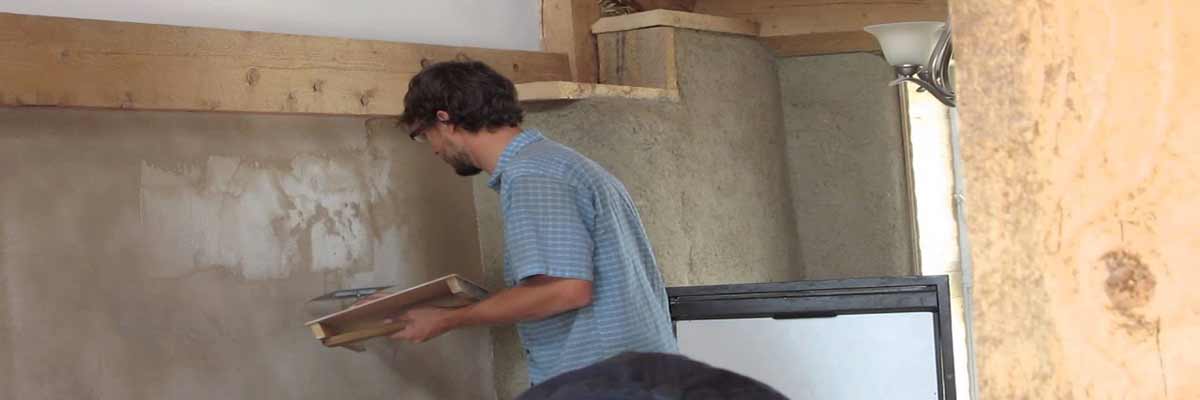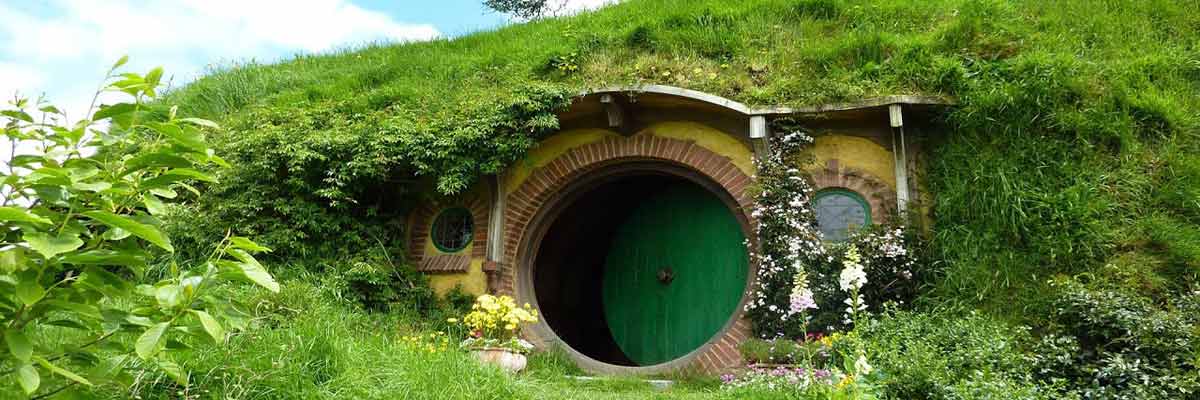Rosalie Bay Resort Features Dominica’s First Wind Turbine
Resorts around the world continue to impress me with their commitment to sustainable practices — but Rosalie Bay Resort on the island of Dominica in the Caribbean is truly a standout.
Five years in the making, the 22-acre getaway was built on principles of conservation and preservation, surrounded by an undisturbed natural setting of mountains, lush forests, and gardens. In addition to solar panels, the resort also features a Norwin Turbine 225 kW — which provides some 70% of the power used by the 28 beautiful rooms in nine cottages. With these renewables in place, Rosalie is effectively self-sustaining; an epic achievement that’s yet still rare in today’s world of “green resorts”.
“Nature should be preserved and shared,” said Dr. Ken Watson, general manager. “Rosalie Bay Resort was designed to be environmentally sustainable while showcasing one of the most beautiful natural settings in the Caribbean. Many resorts claim to be green, but we’ve made a legitimate commitment with the wind turbine being the centerpiece of our pledge.”
If Darth Vader Built A Treehouse, It Would Looks Something Like This
A lot of people are comparing this beautiful treehouse in Portland, Oregon to a hobbit dwelling. Personally, add a little black paint and it looks like something Darth Vader would retreat to when things get a little to hectic on the Death Star. It also looks like it would double as a swanky TIE fighter. From the architect,
Located on a flag lot, a steep sloping grade provided the opportunity to bring the main level of the house into the tree canopy to evoke the feeling of being in a tree house. A lover of music, the client wanted a house that not only became part of the natural landscape but also addressed the flow of music. This house evades the mechanics of the camera; it is difficult to capture the way the interior space flows seamlessly through to the exterior. One must actually stroll through the house to grasp its complexities and its connection to the exterior. One example is a natural wood ceiling, floating on curved laminated wood beams, passing through a generous glass wall which wraps around the main living room.
Crazy Treehouse Could Probably House A Small Village
When you were a kid, did you ever dream up the goal of one day building the largest treehouse ever? For Horrace Burgess in Tennessee, that dream became a reality with this gargantuan structure that features 11 floors and more than 8,000 sq.ft. of real estate. From ZuZuTop,
The greatness of Horrace Burgess treehouse is not subject to the tree on which it is based alone though. As it turns out, while the tree in question does contribute something to the height of the treehouse, the owner’s efforts also go a long way towards this greatness possible. The tree’s contribution to the 97 foot edifice is only 80 feet, so that the other 17 feet on top of the basic 80 foot are from Horrace’s sheer effort. To be sure, we can’t begrudge the base tree of a claim to greatness too: a tree towering at 80 feet in height and with a diameter of over 12 feet is a real wonder.
Incredibly enough, Burgess isn’t done yet. This whole project, which he estimates to have cost north of $12,000, is still a work in progress. Tower of Babylon anyone?
Auerworld Willow Palace: Celebrating 10 Years Of Growing Green
Continuing on our post from yesterday about the living root bridges of India, we present to you this beautiful creation now celebrating 10 years.
Started in 1999 by architect Marcel Kalberer and a group of 300 volunteers, the Auerworld Willow Palace is a canopy of strategically-placed trees woven together. The project was based on ancient techniques used in both Mesopotamian and European structures. The Willow Palace has proven so popular, that it is now the focal point of “Full Moon” celebrations that draw thousands.
Since Kalberer began creating natural structures back in 1984, he’s helped design more than 70 additional projects throughout Europe — and inspired thousands more willow designs around the world.
Green Mansion Comes With An Ocean Floor View
While the words “green” and “mansion” don’t really play nice together, this home — called the Acqua Liana — is certainly a testament to big-thinking green design.
Coming in at over 15,000 square-feet, the Liana resides on about 1.6 acres near the Atlantic Ocean. It is the first home to be built and certified to the rigorous “green” standards as defined and mandated by the U.S. Green Building Council, the Florida Green Building Council and Energy Star for Homes. Some of the green features include:
Solar panels generating enough energy to run the entire home on certain days (generating enough electricity to run 2 average sized homes). When combining the home’s solar use, energy efficient appliances and air-conditioning, insulative characteristics and overall architectural design, the home’s automated bio-feedback system will display its energy efficiency in real time.
The Green Picture: Church Becomes A Part Of Mother Nature
I’m a big fan of watching nature re-claim buildings — and this is a perfect example of that. Best I can tell, this is a church in Toronto. Now, I’m not sure whether the building is abandoned or if someone has been neglecting the ivy. Either way, there’s certainly not much sunlight entering through that window anymore!
Review: The Beautiful And Functional Cascata Rain Barrel
I’ve always wanted a rain barrel. In fact, back in June,I wrote a post declaring as much and announcing my quest to pick something up that was both eye pleasing and practical. Living in Ithaca, NY, I don’t have many problems with drought — but watching all that water roll off my roof, I figured it was a waste to simply see it hit my lawn and disappear. Besides, why pay that much more for municipal water for my garden when I could capture that which fell from the sky?
I’ll admit that writing about water issues in the southwest U.S. and visiting friends in Arizona also made me curious why water conservation tactics (like rain barrels) weren’t used more. Was it because they’re still relatively unknown? Were they a pain to setup and use? I was curious and therefore wanted one. Thankfully, the folks at Garden Supermart heard my cry and hooked me up with one of their Cascata Rain Barrels. After playing around with it (I use that term loosely) for two weeks, I can sum up my reaction in one sentence: Everyone should have one.
Second-Generation Solar Trees To Be Even More Awesome Than Real Trees
Much praise has been heaped upon designer Ross Lovegrove since his solar trees first debuted in Vienna in October 2007. Essentially a solar-powered streetlamp — but also a work of art — the structure creates, as the designer puts it, “complex natural forms in a city that can benefit all of society.” They also save energy — and have managed to survive Vienna’s dark spells, with light still being generated even after four days without direct sun. From the article,
“When we were setting up the tree outside it was quite wonderful,” Lovegrove said. “Even when we had one stem, it was incredible, it seemed so insignificant but actually it really stood out and it proves this point that modern technology and design can really lift people’s spirits, it becomes an eye catcher because it’s sort of out of context. The Solar Tree is just a streetlamp but actually some of the small things which can have a big impact on our life are all open for reinterpretation.”
With the first-generation lamps firmly planted on some of Europe’s most famous streets, Lovegrove is now planning on the next-generation design. It will be called the “Adaptive Solar Tree” and, just like the real thing, will feature robotics that seek out sunlight or respond to changes in weather.
Don’t Pin Your Hopes on a “Green” Economy
Both presidential candidates have stumped for a new “green” economy. To me this smells of the supposed transformation to the “information economy” touted only a decade ago. Fortune had this to say on June 30th:
What senators McCain and Obama believe about U.S. energy policy matters – hugely. To fight global warming, the next President will oversee the transition to a new, green economy , which will result in one of the biggest business transformations of the 21st century and potentially one of the largest transfers of wealth since the creation of the income tax.
Masdar City To Get Solar-Powered Personal Rapid Trainsit System
NPR aired the last episodes this week in their year long series titled Climate Connections by focusing on the new “zero-emissions” city being built outside of Abu Dhabi called Masdar City. With an expected population of 50,000 people, the “experiment” in green technologies and sustainable design will be the largest effort ever to create a carbon-neutral urban center. The project is the crown jewel in the Abu Dhabi’s amibtious plans to become the ‘silicon valley’ of the renewable energy world. The Middle East certainly isn’t naive when it comes to looking past oil for the future security of their economies.
One of the more interesting technologies being put into action in Masdar is the PRT — or Rapid Transit System. Designed to hold six people, these pods will travel to more than 1,500 stations distributed throughout the city. From the NPR clip,
GE Announces New Line Of Efficient Tankless/Hybrid Water Heaters
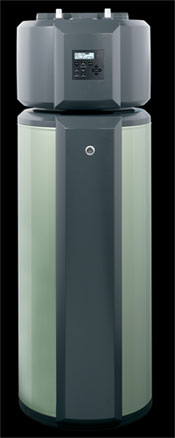 Tankless water heaters always seemed to make a lot of sense to me. I mean, hot water on demand as opposed to hot water sitting and waiting — seems smart, right? Everytime I go away on vacation, I lower the temp on my water tank to conserve energy, but I know I’m in a small minority. Most people probably go along heating water even when they’re not home for extended periods of time.
Tankless water heaters always seemed to make a lot of sense to me. I mean, hot water on demand as opposed to hot water sitting and waiting — seems smart, right? Everytime I go away on vacation, I lower the temp on my water tank to conserve energy, but I know I’m in a small minority. Most people probably go along heating water even when they’re not home for extended periods of time.
Which is why I’m jazzed about GE’s new line of tankless water heaters. For those that don’t need tankless, the electric-hybird heater they’ve got waiting in the wings looks pretty sweet as well. According to the release, the gas tankless on-demand heaters will “save 25 percent in water heating costs on an annual energy bill in comparison to a standard 40-gallon gas tank.” Additionally, the unique design can help avoid up to 25 percent of CO2 emissions tied to water heating.
Even better, earlier today the U.S. Department of Energy created the first ENERGY STAR standard for water heaters. Ironically, water heating was the only major residential energy product that did not have an ES designation — even though it’s one of the largest energy consumers in the household.
Of course, not everyone has access to gas (and truly, for those of us building green homes, reducing the use of fossil fuels is probably on the short list) so GE is getting ready to launch an Electric-Hybrid water heater for next year. According to early tests, this hybrid would reduce typical water heating energy consumption by more than half. While the typical home might use 4800kwh/year, the GE model consumes only 2300kwh/year. Plus, it would retain the same footprint of standard water heaters allowing easy installation.
Harnessing The Power Of Luffas For Shade And Sponges
If you’re a regular reader, you no doubt know we here at Groovy have a fascination with the seemingly magical properties of the Luffa. Not only can it be harvested to create the sponge-like scrubber most people love in the tub, but it can also help shade your home and keep things cool in the heat of summer. Just ask John Lawvere — an entire side of his trailer in Arizona is shaded from the sun with several Luffa vines. Additionally, he makes some extra cash from his crop by selling the “sponges” for $5/each come harvest time. Says John,
“I teach Physics at a community college in Tucson, AZ. My remodeling/plumber friend helped me a lot at building supports for Luffa vines. We have an idea about building structures over parking lots (near apartment complexes and other businesses) to save those people money on air conditioning while producing a valuable crop.”
Not a bad idea, right? We applaud John and his amazing “Luffa Tunnel” — something he says “convinced my girlfriend’s mother (in Belarus) that I was a good man.” Ha, nice.
For our original classic, “How To Make (And Grow) A Luffa”, click here
A Treehouse For Adults That’s Also Yours To Rent
I’ve passed this treehouse before while stumbling online, but on my second time ’round I thought it was beautiful enough to pass a mention here on Groovy.
Located in wild, gorgeous British Columbia, this 15ft. tall platform home is built upon 7 trees. As one would expect, it also features some incredible design characteristics that look like something out of The Lord of the Rings; including carvings, 2 handmade spiral staircases, and rustic furniture. You’re even treated to a beautiful view of the Rocky Mountains from the living room. All this, and it’s only $150/night with access to over 320 acres of hiking, fishing, and lake activities.
Interested? Jump on over to enjoy life in the trees. Your inner-kid will thank you.
Beijing’s Olympic Aquatic Centre Is A Green Wonder
Just in time for the 2008 Olympic games in Beijing, the official grand opening of the Olympic Aquatic Centre took place this past Monday in celebration of its unique architecture and eco-friendly characteristics.
The building, four years in the making, is nicknamed the “Water Cube” and is a rectangular-shaped steel design covered by a membrane of brightly lit blue bubbles. Not only are these stunning to look at, but they also serve an important purpose in reducing energy costs by 30%. The membrane is made out of a material called ETFE, (Ethylene Tetrafluoroethylene) which absorbs solar radiation and reduces thermal loss. Very similar, I suppose, to the way a solar cover works on a pool.
Not only is ETFE recyclable, but it’s also very strong; capable of bearing up to 400 times its own weight. Gizmag fills us in on additional details,
Green Roof Proposed For Stretch Of California Highway
This sounds like a wonderful idea — if anyone happens to have $200 million lying around.
A plan has been submitted to cover a stretch of California highway with a 24-acre park. It would be built on a deck constructed over the below-grade portion of the Hollywood Freeway (US-101). Organizers argue that by placing a “cap” over one of the world’s most congested freeway systems, the necessary ventilation system would clean the air before re-circulating it back into the environment — creating a positive improvement in air quality for LA. Additionally, the park would also provide a nexus between East Hollywood and Central Hollywood–”alleviating the strain on the community from the initial creation of the freeway through this section of Hollywood.” From the site,
Eco Sac: The Water Bladder For Your Home
If giant rain barrels aren’t aesthetically pleasing or you lack the room for installation, you may want to consider the Eco Sac; a flexible rainwater bladder storage system that hides away under decks or floors. Each sac is manufactured using “industrial strength fabric sealed by high frequency welding.”
According to the site, the eco sac is better than your average rain barrel because a.) it captures water faster than rigid tanks, b.) you can use multiple bladders which all fill at the same rate and at the same time c.) it is guaranteed not to leak and d.) it is algae resistant and the water stored is potable.
Pretty cool idea for those with limited space to capture rainfall. There are 54 different sizes to choose from, ranging from 2,200 liters to 8,600 liters. Apparently, you can join multiple sacs together to get up to 50,000 liters or more water storage.
Much like the portable grey water recycler we wrote about earlier this week, this product is currently only available in Australia. Something tells me however — with the water woes currently affecting parts of the U.S. — that we’ll be seeing more of these stateside shortly.
How-to Video on Natural Earth Plastering at Dancing Rabbit TV
I caught this video today over at Dancing Rabbit TV. It’s a great look at building your own earthen walls. Head on over for a look:
Part I
Town Decrees Solar Panels Ugly, Family Fights Back
I always find amusing the rules that some of my friends around the country must abide by when living in community housing developments. Your grass can only be so high, children’s toys must be kept to a minimum outside, your house can only be certain shades of color, etc. etc. It’s a frightening utopia of meaningless laws and trivial worry. When I heard that the town of Scarsdale denied a family the opportunity to put up solar panels — on the basis that they were ugly and “not in keeping with the character of the community” — I immediately wanted to cry/laugh. You have got to be kidding me.
But then I thought that such reactions are probably not too uncommon. We live in a world with designer water, designer shampoo, and animal spas. People have become so accustomed to modular cookie-cutter homes with white picket-fences and weed-free sidewalks — that they’ve actually forgotten there’s a world of people out there who could care less and actually would like to live a unique existence; with character and vision for their own lives. So, when you move to a place like Scarsdale, and they deny you the ability to lead that existence based on the above criteria, what do you do? You call their bullshit and fight back. From the article,
How To Build A Hobbit House (That You’d Actually Want To Live In!)
Just found this link to a beautiful ‘How-To’ that takes you through the steps of building your very own low-impact woodland home. It’s appearance is very similar to the Hobbit homes featured in Lord of the Rings, but the aesthetics of the design also make it a piece you might find in Better Homes and Gardens. The cost? The author estimates total expenditures of about $6,000. This, and about 1000-1500 labor hours to put everything together. From the site,
“Take one baby, a toddler and a building site. Mix well with a generous helping of mud, combine with 6 weeks of solid welsh rain whilst living under canvas. Do this in candle light without a bathroom or electricity for three months. Chuck in living with your father for good measure. Top with an assortment of large slugs. The result a hand crafted home of beauty, warmth and health for about 3,000.”
